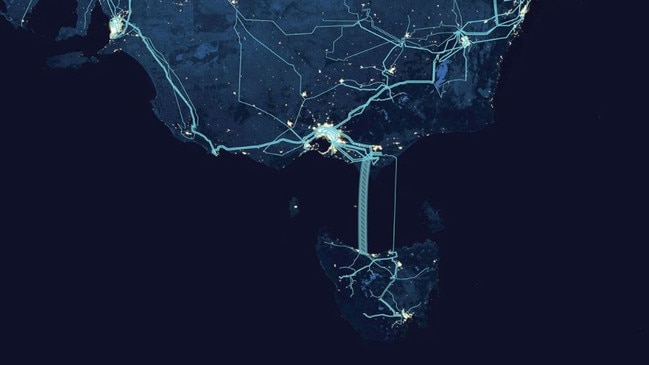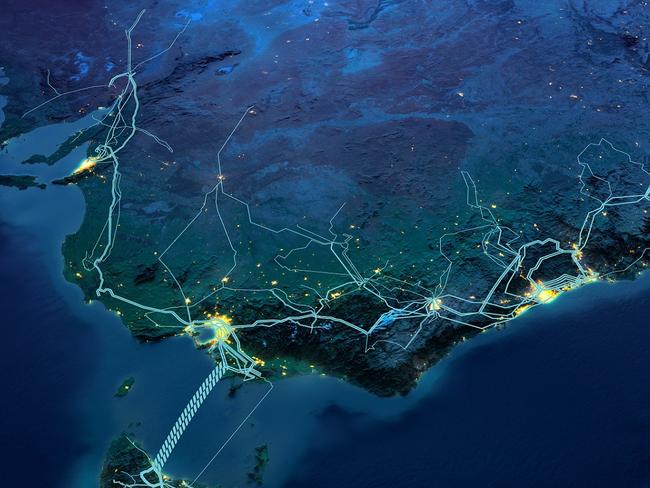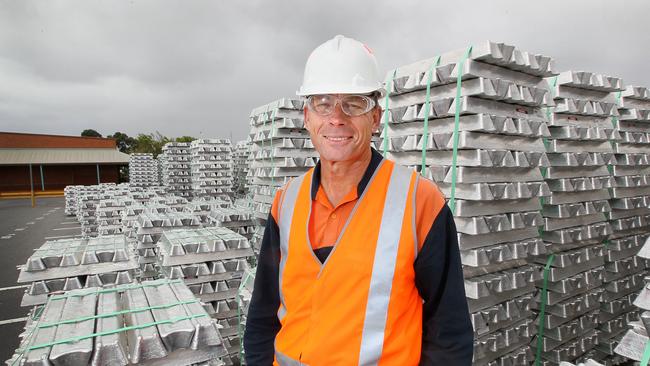Tasmania is a renewables utopia. Then why does it pay so much for power?
Tasmanians should be feeling a decarbonised warm inner glow. Instead, they are paying an increasingly high price to keep alive a green scheme aimed at helping the mainland catch up.

With their 100 per cent dispatchable renewable energy, Tasmanians should be feeling a decarbonised warm inner glow as the rest of the nation struggles with surging power prices and supply scares.
Instead, Tasmania’s historic investment in hydro-electricity appears to count for nothing as its residents’ power bills rise similarly to those of other Australians.
Hydro production costs have not risen significantly in recent times, yet Tasmanians were slugged an 11.8 per cent power price hike in July, and energy analyst Marc White is predicting a further 15-20 per cent increase from July next year.
It has Tasmanian households and business owners scratching their heads and asking: “Why?”
The answer, it seems, is that they are paying to keep alive a dream. Specifically, the almost utopian vision of Tasmania as the “battery of the nation”.
It would make the island a “renewables export powerhouse”, generating double the energy it needs, via 2500 megawatts of new wind-farm generation and enhanced hydro. This “clean, green” energy would be exported to the mainland, playing a key role in decarbonising the nation.
The key is the proposed $3.8bn Marinus Link – a 1500-megawatt, 255km undersea electricity connector linking Victoria and Tasmania – through which this power would flow.
Its backers include the Albanese government, which in October announced with great fanfare it would provide a low-cost loan for 80 per cent of the project cost.
The federal, Tasmanian and Victorian governments also agreed to fund the remaining 20 per cent, while federal taxpayers will provide further low-cost debt for $1bn in associated hydro upgrades and pumped hydro projects. Go-ahead is subject to a final investment decision due in late 2024.

So why is Marinus dreaming forcing up Tasmanian power bills and what might the project do to them once operational?
For Marinus to work, Tasmania must be part of the National Electricity Market, so it can trade all that surplus power interstate. But the NEM exposes Tasmanians to pricing influenced not by its stable hydro but instead by soaring gas prices, shrinking coal production and war in Ukraine.
The Tasmanian government appears to believe it can’t delink from the NEM without spooking investors needed for Marinus and its associated legion of new wind farms. This is proving a gift for state Labor, which has twice introduced legislation to “effectively delink” from the NEM by capping price hikes. The government has won the parliamentary battles, but is in danger of losing the wider war over public opinion.
“There is no supply, storage or generation issue here in Tasmania,” says state Labor energy spokesman Dean Winter, a much more cautious advocate for Marinus than his federal counterpart, Chris Bowen.
“Over generations, Tasmanians have invested in hydro generation assets and Tasmanians expect to get the benefit of that. Instead, they’re seeing price rises predicted to cost the average household $500 next year.”
Winter argues legislated price caps won’t scare off wind farm or other investors, but the government has responded instead with assistance for concession holders and energy efficiency loans.
This seems unlikely to prevent a looming revolt by business, with peak groups foreshadowing to Inquirer a push for a revised approach to power pricing.
Marinus Link chief executive Bess Clark says analysis shows the average Tasmanian household will save “up to $70 per annum” when the project is fully operational.
The Tasmanian Minerals, Manufacturing and Energy Council agrees Marinus would bring benefits to the NEM, improve Tasmania’s energy security and create jobs during construction works.
However, council chief executive Ray Mostogl does not believe assurances that Marinus will lead to lower power bills, given the need to pay for a doubling or more of transmission infrastructure.
“I don’t know how you can build all those assets and do it for less than we are currently paying,” Mostogl argues.
Based on average cost blowouts for major infrastructure projects, he believes Marinus will cost closer to $6bn, perhaps more.
And he says a “huge issue” with Marinus is the prospect of Tasmania losing its competitive advantage: cheap, stable hydro power able to attract manufacturing to the island.
Why would a major manufacturer set up in Tasmania – with all the extra costs and complications of Bass Strait – when it could do so in Victoria and, via Marinus, access the same dispatchable renewable power?
“If we don’t do something different, I think Tasmania will replicate what’s happened with gas on the east coast (of Australia),” Mostogl explains. “Prior to all the exports, gas was reasonably well priced, supply-demand was nicely in check. Since that international connection was made it’s just gone ballistic.”

He believes Tasmania should consider an energy “reservation policy” or “different pricing structure” to favour existing businesses and those willing to set up in the state, over mainland-based firms simply buying Tassie power.
Linking Tasmanian power prices to the NEM made sense when it occurred in 2005, when the chief concern was the lack of competition on the island, but “it’s time to revisit that in the new world”.
“There’s an opportunity to ensure we pay a fair price and there’s a fair margin for the players, but that Tasmania isn’t subjected to the crazy forces that the rest of the country is,” Mostogl says.
“We already have our 100 per cent renewable. We don’t need to do any more for Tasmania. Anything we do in Tasmania is effectively going to be done for others, so there are grounds to do that.”
Small to medium businesses are also demanding a dual-pricing system: one for on-island businesses and another for mainlanders importing Tassie power.
“That would give us a competitive advantage – why should everyday Tasmanians be paying inflated market prices?” says Robert Mallett, chief executive of the Tasmanian Small Business Council.
While critics say it is unclear who will repay the billions in federal concessional loans, Marinus Link’s Clark suggests all Australians will ultimately pick up the tab.
“Consumers across the NEM will contribute to paying back the concessional loan as part of the transmission service cost, just as they would for any other regulated transmission project,” she says.
State Energy Minister Guy Barnett promises Marinus will “support lower wholesale energy prices”, a pledge Mostogl argues notably avoids any mention of retail prices.
Barnett insists Marinus is a good deal for Tasmanians and mainlanders. “Tasmania needs the additional energy unlocked by Marinus Link to assist our businesses and industry to further expand and grow,” he argues.
“Marinus Link will unlock new renewable industries and green manufacturing opportunities, attracting more investment in regional areas of Tasmania, including 1400 jobs in Tasmania and bringing more than $7bn in additional economic activity to the state.
“There will also be telecommunications benefits to Tasmania, as Marinus Link will carry additional fibre-optic capacity.”
Energy economist Bruce Mountain is among those unconvinced, believing Marinus can only proceed with multibillion- dollar federal grants and will undoubtedly lead to even higher power prices for Tasmanians.
“I don’t think the economics stack up at all,” says Mountain, director of the Victoria Energy Policy Centre.
“Tassie will absolutely permanently kiss goodbye the intrinsic advantage they had through decades of clever engineering with their hydro. I think it would be a daft decision.”




To join the conversation, please log in. Don't have an account? Register
Join the conversation, you are commenting as Logout